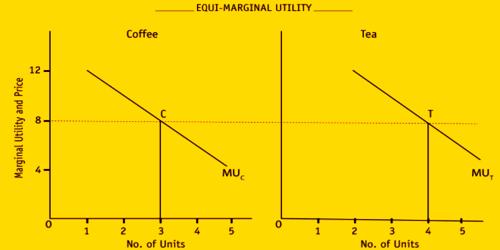The law of substitution is also known as the law of equi-marginal utility or the law of maximum satisfaction. This law was first developed by H.H Gossen. Therefore, this law is also known as second law of Gossen. Prof. Marshall has developed and given the present shape of this law.
Explanation of the Law:
In order to get maximum satisfaction out of the funds we have, we carefully weigh the satisfaction obtained from each rupee ‘had we spend If we find that a rupee spent in one direction has greater utility than in another, we shall go on spending money on the former commodity, till the satisfaction derived from the last rupee spent in the two cases is equal.
The law of substitution is also known as ” The Law Of Maximum Satisfaction” because the consumer can maximize his/her satisfaction by spending income in accordance with this law. It is called ” The Law Of Substitution” because the consumer will go on substituting one commodity with higher marginal utility for another commodity with lower marginal utility till the marginal utility of each commodity is equal. Suppose, there are two commodities X and Y on which a consumer has to spend a given income. If he finds that the marginal utility of commodity X is higher than the marginal utility of commodity Y, he will substitute the former for the latter till their marginal utilities are equalized.
















